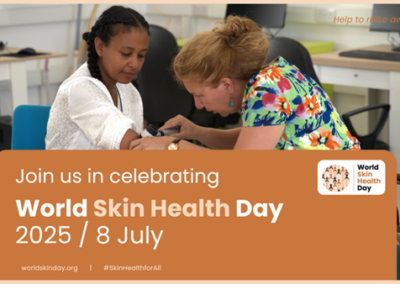Written by Tom Macmillan, Consultant – Systematic Review
The NICE Medical Technologies Evaluation Programme (MTEP) evaluates novel medical devices and diagnostics for use within the National Health Service (NHS). There are currently 3 outputs from the programme: medical technologies guidance (MTGs), diagnostics guidance (DGs) and medical innovation briefings (MIBs). A fourth type of guidance, digital health technologies (DHTs), is being piloted. For MTGs, a cost-minimisation rather than cost-effectiveness approach is utilised for the economic analyses, thereby no cost-incurring technologies are assessed, differing from NICE’s technology appraisals (TAs), for example. In this blog, we have summarised the process for developing MTGs and outlined some of the benefits and challenges of the MTEP.
Process for MTGs
Once a manufacturer decides to submit a technology for evaluation, it must first be registered on Healthtech Connect (operated by NICE); an online database of devices, diagnostics and digital health technologies intended for use in the NHS or wider UK health and social care system. If the technology is selected for evaluation, subsequent development of the MTG occurs over an approximate 38-week period. (NICE ‘How we develop medical technologies guidance’). At the beginning of the process, a medical technologies advisory committee (MTAC) ensures the technology meets certain criteria and determines whether the technology assessment should be an MTG, DG or MIB. The manufacturer is informed of the decision; either an MTEP is initiated or the manufacturer is offered advice regarding a potential later submission (e.g. more evidence is required).
If successful, timelines of the MTEP are as follows:
- Week 0-6 – Draft scope is prepared by NICE using expert opinion, patient organisations, MTAC and other registered stakeholders. E.g. the external assessment centre (EAC).
- Week 6-8 – Manufacturer completes an evidence-based submission, divided into part A (decision problem), B (clinical evidence) and C (economic evidence). Part C is typically completed and sent to the EAC two weeks following submission of part A and B.
- Week 8-18 – The evidence-based submission is reviewed and critiqued by an independent EAC, who produce an assessment report. This forms the basis for the decision-making process during the first MTAC meeting.
- Week 21-24 – Draft recommendations are formulated at the first MTAC meeting, which are published in a consultation document on the NICE website for 4 weeks, during which time registered stakeholders, health professionals and members of public may comment on the decisions.
- Week 30-38 – At the second MTAC meeting, all comments are taken into account and the final recommendations are produced. There is a subsequent 3-week period in which resolution requests can be made regarding potential corrections.
- Week 38 – If there are no resolution requests or corrections to be made, the final guidance is published.
All medical technology guidance is subject to review every three years following initial publication, involving a re-run of evidence searches and updated economic analyses. If the technology remains unchanged and unmodified, and new evidence fails to contradict the original recommendations, the published guidance will not be amended.
Benefits and disadvantages/challenges of the MTEP process
There are a number of benefits and disadvantages or challenges faced during the MTEP process, namely:
- Manufacturers may benefit from NICE guidance recommendations to help broaden market appeal of their product
- There must be a sufficient quantity and quality of evidence for the technology being assessed. Manufacturers of medical devices are typically small to medium-sized enterprises (SMEs) for whom carrying out clinical trials can be prohibitively expensive. Furthermore, it is challenging to design high-quality comparative trials for particular devices (e.g. implantable devices or other technologies for which a placebo arm is impractical or unethical). The short-term lifespan of medical devices also disincentivises manufacturers from investing in trials (Chapman et al.). Keeping this in mind, the MTAC will also consider lower quality evidence during the MTGs process (Groves et al.).
- The technology may receive a negative assessment or an equivocal verdict, e.g. research recommendation. Insufficient quality or quantity of evidence, and an economic model indicating a device is cost-incurring, are the main reasons for a negative recommendation (Crispi et al.).
- Research indicates that numerous device manufacturers sell their technology to the NHS without NICE recommendation and see little benefit in investing time or money towards the MTEP process (Sprange & Clift)
- Although the MTEP was established back in 2009, there is an imbalance between the relatively few completed MTGs (44), DGs (34) and MIBs (195) compared with TAs (400). This discrepancy is more striking considering the size of the medical device market; 13,010 patent applications for medical devices were filed with the European Patent Office in 2017 alone, compared with 6,330 for pharmaceuticals (MedTech Europe report).
Conclusion
The MTEP was introduced by NICE in response to calls from the Department of Health to provide a coherent system for the evaluation of medical devices. The programme considers the specific requirements of medical device evaluation as distinct from that of pharmaceutical technologies (NHS Next Stage Review). The MTEP provides device manufacturers with a single access point to evaluation, laying out a streamlined process which aims to provide a final recommendation in 38 weeks. A successful NICE recommendation is a marketable achievement for device manufacturers. However, it important to note that a significant portion of SMEs may have limited capacity with regards to conducting sufficient evidence-based research for successful recommendation, while others may be hesitant to submit considering the risk of a negative evaluation.
NICE perspective and overview of MTEP – https://www.ncbi.nlm.nih.gov/pmc/articles/PMC6241610/
Analysis of 31 completed MTGs – https://pubmed.ncbi.nlm.nih.gov/30367349
Critical review of ~4 years of MTEP https://pubmed.ncbi.nlm.nih.gov/24934924
Manufacturer perspective (SMEs) from 2012 – https://www.ncbi.nlm.nih.gov/pmc/articles/PMC3326591/
Analysis of 12 economic MTEP submissions – http://eprints.whiterose.ac.uk/105580/7/MTEP_economic_submission_resubmission_accepted_vesrsion.pdf
Economic evaluation in devices vs drugs – https://academic.oup.com/europace/article/13/suppl_2/ii54/412320




